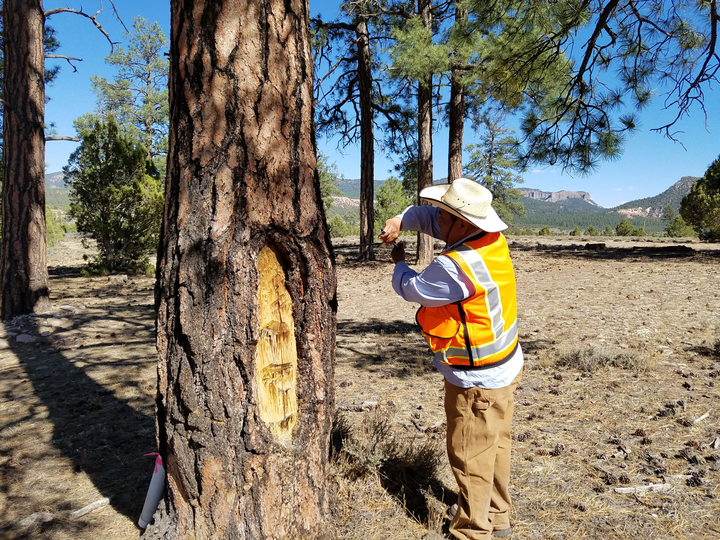
Developing data and knowledge toward the preservation, protection, and forest management of culturally modified trees on the Navajo Nation
Over the last 10 years, as I’ve tromped through the amazing Navajo forests I’ve encountered hundreds of culturally-modified trees (CMTs). Usually ponderosa pine, these trees have had a section of bark removed in order to gather the cambial layer (living tissue between the bark and the wood) and the inner bark. There are numerous uses of these materials - from medical to ritual to emergency food or supplemental livestock feed - and the passage of time leaves a beautiful wound on the the trunk. “Peel trees” are like windows into the past because they mark human activity on the landscape, and dendrochronologists like myself can non-invasively sample the peels and determine the year of peeling. That’s powerful information!
A few years ago I approached the Navajo Heritage and Historic Preservation Department about the trees. My years of avoiding them, because I did not a cultural resources sampling permit or permission, were coming to an end. I was actively sampling old-growth forests where the lack of logging has left many of these trees still around. I offered to sample the wounds on the CMTs and report back with my findings. Soon thereafter I began to collaborate with William Tsosie, the Forest Archaeologist for HHPD. Now, Will and myself along with other colleagues are beginning to document and collect samples from every CMT tree that we can find.
In 2019 we received seed funds from the University of Arizona Foundation that we will use to sample a dense cluster of CMTs Will found near Wheatfields Lake along the Arizona-New Mexico border on the Navajo Nation. Hopefully the peoples of the Navajo Nation will emerge healthy from the COVID-19 pandemic, and we get out there and discover history.